Opinion & Analysis
Five statistical shortcuts for lower scores
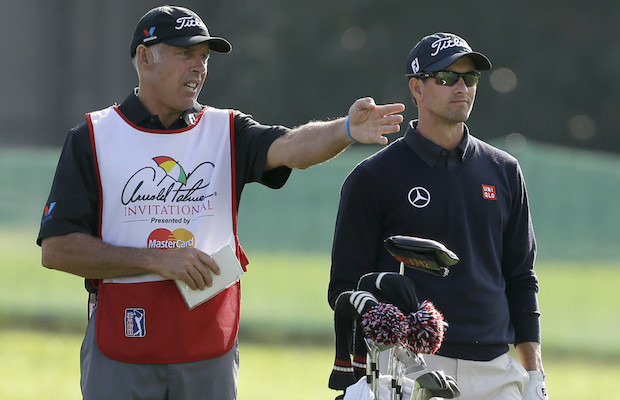
One of the very first things I examine with the PGA Tour players I work with is their basic scoring metrics. Those metrics include the following:
- Adjusted Total Scoring Average
- Adjusted Par-3 Scoring Average
- Adjusted Par-4 Scoring Average
- Adjusted Par-5 Scoring Average
- Adjusted Bogey Rate
- Adjusted Birdie Rate
The term “adjusted” means that actual average is adjusted based on the difficulty of the courses they play.
It’s important that golfers understand these metrics at a fundamental level to improve, because that is what the game is about: shooting the lowest possible score you can. And if you can better determine what your strengths and weaknesses are from a pure scoring perspective, you can then start to reverse engineer what you need to work on in order to get better.
Here’s five scoring metrics and/or strategies that can help you get your handicap trending in the right direction.
No.1: Par 4 Scoring Average
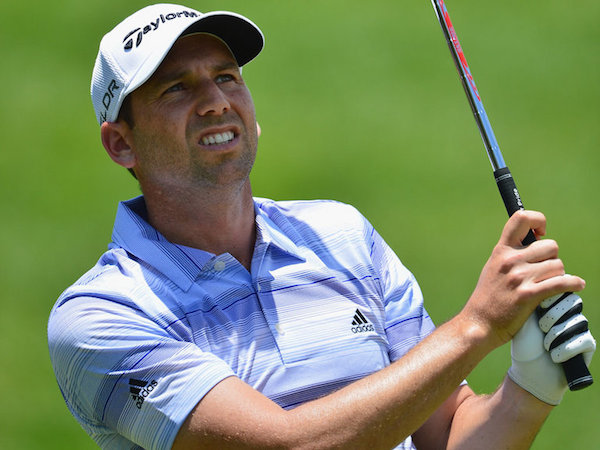
Sergio Garcia leads the PGA Tour in par-4 scoring average in 2014 at 3.96 strokes per hole. He also leads the Tour in scoring average, and ranks in the top-10 in GIR, sand save percentage, scrambling and approaches from 200-to-225 yards.
The scoring average golfers have on par 4’s has the strongest correlation to their total scoring average. This is particularly true on the PGA Tour, because Tour players play roughly 11-to-12 par 4’s per round. The same holds true for the average amateur on an 18-hole championship course.
Par 4’s are the truest test of a player’s overall ability, however, that does not mean a good par-4 player cannot struggle in certain areas. Phil Mickelson has been a terrible driver of the ball historically, yet he plays par 4’s extremely well. Mickelson just happens to make up for it by being one of the best iron players in the world, arguably the greatest trouble-shot player of all time and generally a good putter with a great short game. Boo Weekley tends to be a good par-4 player as well, but he is one of the worst putters on Tour and has a mediocre short game. He just makes it up with incredible driving of the ball and good-to-great iron play.
In order to play the par 4’s better, I recommend working on what I call the four cornerstones of the game:
- Driving
- Long approach shot play (175-to-225 yards for scratch or better golfers, 150-to-200 yards for other amateurs)
- Short Game (10-to-20 yards for less than 5-handicaps, 10-to-30 yards for 5+ handicaps with an emphasis on bunker shots)
- Putting (3-to-15 feet for less than 5-handicaps, 3-to-25 feet for 5+ handicaps)
If one can practice these areas and start to see improvement on the range, then they will very likely see a dramatic improvement in their play on the par 4’s. But, if their par-4 play is a problem, then it is very likely due to one of these issues.
No. 2: Bogey Rate
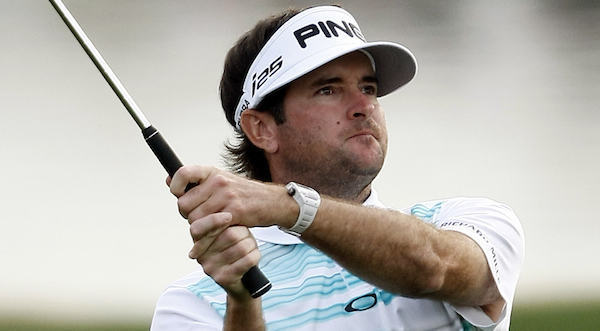
Bubba Watson is No. 2 in Bogey Avoidance on the PGA Tour (Sergio Garcia is No. 1), making bogeys only 13.21 percent of the time. While he’s not considered a great putter and ranks near the bottom of Tour player in sand save percentage, he a leader on Tour in many ball striking statistics including driving distance and GIR.
I list Bogey Rate second because it has the second strongest correlation to scoring average on Tour. The reason is that this stat includes all double, triple and quadruple bogeys. For all intents and purposes, the best somebody will do on a hole is make a birdie (eagles happen, but very rarely). Theoretically, however, a golfer can shoot an infinitely high score on each hole. And if a golfer makes a double bogey, they now need to make two birdies in order to break even. By then, they have already used up one-sixteenth of their round and are quickly running out of holes to make more birdies.
The other important facet to understand about bogeys is that they are often not related to a golfer’s short game. Instead, they are often related to a golfer’s ball striking ability. For example, even if a golfer is a terrible putter, if he leaves himself a 20-foot putt for birdie on every hole he’s not likely to three-putt that often. He may not make many birdies, but he is not going to make many bogeys either. That is why Hogan was such a great player even when he had the putting yips; he still hit the ball close to the cup repeatedly, and even his putting would not yield many bogeys.
I even came up with a game in 2013 Pro Golf Synopsis to help promote getting the ball closer to the hole called the “15/5 Score.” Here is how I recommend 10 handicaps or better to play it:
- 2 points for every birdie opportunity (putt or chip) inside 15 feet.
- 1 point for every par putt inside 5 feet.
- -3 points if the par putt is not inside 5 feet.
- +3 points for eagle putts inside 15 feet.
For golfers above with a handicap of 10 or higher, I would just go 1-stroke higher:
- 2 points for every par opportunity (putt or chip) inside 15 feet.
- 1 point for every bogey putt inside 5 feet.
- -3 points if the bogey putt is not inside 5 feet.
- +3 points for birdie putts inside 15 feet.
The golfer can only record one score per hole, so if a 4 handicap has a 12-foot birdie putt and leaves it to 2 feet, he or she can only record 2 points for the birdie opportunity inside 15 feet.
I admit that there are golfers who have high bogey rates because of their short game and putting. It’s just that poor ball striking tends to cause more bogeys than most golfers would believe. For those golfers who struggle with making bogeys because of their short game and putting, I advise that they work on their short game shots from 10-to-20 yards and their putting from 3-to-5 feet. The goal should be to make 90 percent of their putts from 3-to-5 feet. Once that is accomplished, move on to making 5-to-10 foot putts.
No. 3: Par 5 Scoring Average
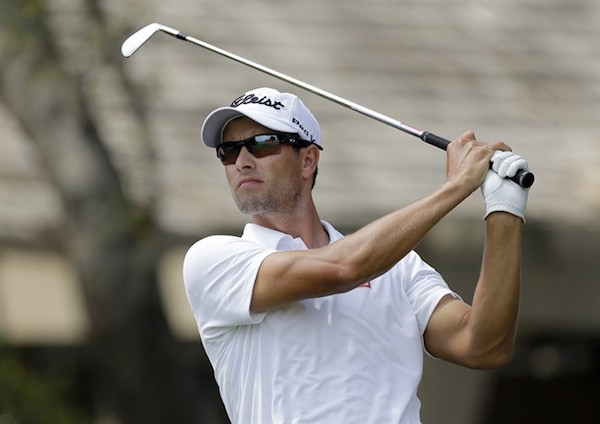
Adam Scott leads the PGA Tour in par-5 scoring average at 4.45 strokes per hole. He ranks near the top in driving distance, driving accuracy and goes for the green on par 5’s 67.24 percent of the time, ninth most on Tour.
Par-5 performance is greatly influenced by the distance golfers have off the tee and their club head speed. We see a strong correlation between par-5 performance and the “go for it” rate on Tour. According to PGATour.com, a player is assumed to be going for the green if the second shot lands on or around the green or in the water. “Around the green” indicates the ball is within 30 yards of the edge of the green.
Take note that it counts as “going for it” any time a golfer hits their second shot within 30 yards of the edge of the green. So, a player could have a 300-yard shot to the hole and only be able to hit their 3 wood 250 yards, but it can still be considered a “go for it” if the ball is within 30 yards of the front edge of the green.
Obviously, golfers want to make sure it is feasible to attempt to reach a par 5 in two shots. If the shot requires the ball to fly over water that you’re not likely to carry, there’s no reason to go for it. On the other hand, I see a lot of amateurs and even Tour players lay up to a specific yardage when there is no real trouble instead of hitting their 3 wood as close to the hole as they can. Typically, this is a poor strategy.
All golfers, including Tour players, hit shots closer to the hole on average if the have a shorter shot; provided that the shot is from the same type of lie (fairway vs. fairway, rough vs. rough, sand vs. sand, etc). The idea of getting laying up to a golfer’s favorite yardage is faulty, because while a golfer may be able to stick it close frequently from a specific yardage, their variance in how close they can hit it to the hole becomes greater than if they were, say, 30 yards closer to the hole.
I have tracked numerous Tour players using ShotTracker and experimented with a few friends of mine that are amateurs. What we typically see is that a golfer’s money yardage is often not as money as they think it is.
The best case scenarios happen with Tour players. They will hit shots from their money yardage inside 5 feet, say, 20 percent of the time. And from 30 yards closer, they may only hit it inside 5 feet only 15 percent of the time. The real killer is not their good shots, however, but the deviation in all their shots. The money yardage will provide a greater variance in results than a shot that’s 30 yards closer to the hole. For every two times they hit it inside 5 feet from their money yardage, they may miss the green completely from that distance.
So, what we tend to see on Tour is that the longest hitters with high club head speeds tend to perform best on the par-5’s because they are playing them more like par 4’s. The good par-5 players that do not hit it long off the tee like Webb Simpson, Kevin Na and Matt Kuchar tend to be very aggressive in going for the par-5’s that they can go for and are good performers from 75-to-125 yards when they have to lay-up.
There is one very important caveat to this, however. Playing par 5’s well is mostly about being able to advance your second shot as close to the hole as possible. Most golfers get on a par 5 and are trying to bomb it off the tee to leave themselves with less club into the hole. The better par-5 players, on the other hand, often hit their “stock swing” driver and focus on making good contact and finding the fairway. That’s because even Tour players do not like hitting 3 woods out of the rough, and more often than not they will lay up if they are in the rough. The golden rule I stress to golfers is that any time your second shot is likely to be a 5-iron or longer, take your stock driver swing and focus on making good contact and finding the fairway. This applies for both par 5’s and long par 4’s.
No. 4: Birdie Rate
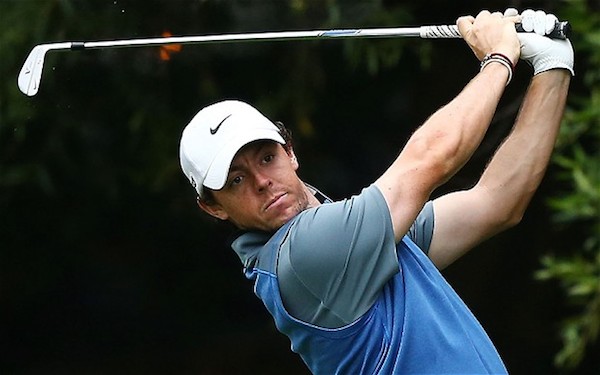
Rory McIlroy leads the PGA Tour in birdie average at 4.75 birdies per round. While he only ranks 72nd in Strokes Gained-Putting, he’s one of the most accurate players on Tour from 100-to-125 yards, 125-to-150 yards, 175-to-200 yards, 200-to-225 yards and 225-to-250 yards.
Birdie Rate is often tied in with Par-5 performance because golfers birdie par 5’s almost three times more than they birdie par 4’s and almost four times more than they birdie par 3’s.
There are some Tour players that generate a lot of birdies, but do not play the par 5’s that well. Those players are usually good at one of or both of these areas:
- Shots from 125-to-175 yards
- Making putts outside of 15 feet
Typical amateurs who makes a lot of birdies but do not play par-5’s well will likely be performing very well from 100-to-150 yards.
Making putts outside 15-feet is a very fleeting metric. Even the best putters on Tour have a very inconsistent percentage of putts made from outside 15 feet. Typically, making putts outside 15 feet will move towards the mean. So the golfer that is making a lot of birdies because they are putting great outside 15 feet will eventually see that cease, because that make percentage is going to regress over time.
No. 5: Par 3 Scoring Average
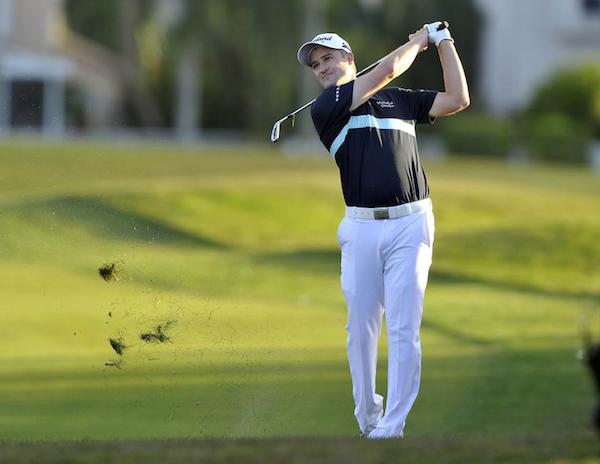
Russell Knox leads the PGA Tour in scoring average at 2.96 strokes per hole. While he only ranks 114th in Strokes Gained-Putting, he ranks 30th in putts from 15-to-20 feet and hits his shots closer to the hole than any other player on Tour with an average of 31 feet 11 inches.
Par-3 performance is:
- 1-part iron play
- 1-part short game play
- 1-part putting outside 20 feet
Typically, if a Tour player performs at least two of these parts well they will perform better than average on par 3’s. Par-3 performance is also a bit fleeting because one part of it relies on making putts that are longer than 20 feet, which you now know is a fleeting metric.
Recent research that I have conducted shows that between the frequency of shots and shot performance, bunker play accounts for 50-to-55 percent of a Tour player’s short game performance. For amateurs with a 5 handicap or greater, it accounts for 75-to-80 percent of their short game performance. That’s why most amateurs should concentrate on their bunker play to improve their scoring average. And they could greatly help themselves by avoiding those bunkers in front of the green, where I found that Tour players hit their shots an average of 38 percent farther away from the cup that shots from the bunkers to the side of the green or in back of the green.
I hope this information allows golfers to better understand scoring, what to practice and how to generate a better strategy to improve their score. Good luck!
- LIKE24
- LEGIT7
- WOW5
- LOL1
- IDHT2
- FLOP3
- OB1
- SHANK1
Instruction
The Wedge Guy: The easiest-to-learn golf basic

My golf learning began with this simple fact – if you don’t have a fundamentally sound hold on the golf club, it is practically impossible for your body to execute a fundamentally sound golf swing. I’m still a big believer that the golf swing is much easier to execute if you begin with the proper hold on the club.
As you might imagine, I come into contact with hundreds of golfers of all skill levels. And it is very rare to see a good player with a bad hold on the golf club. There are some exceptions, for sure, but they are very few and very far between, and they typically have beat so many balls with their poor grip that they’ve found a way to work around it.
The reality of biophysics is that the body moves only in certain ways – and the particulars of the way you hold the golf club can totally prevent a sound swing motion that allows the club to release properly through the impact zone. The wonderful thing is that anyone can learn how to put a fundamentally sound hold on the golf club, and you can practice it anywhere your hands are not otherwise engaged, like watching TV or just sitting and relaxing.
Whether you prefer an overlap, interlock or full-finger (not baseball!) grip on the club, the same fundamentals apply. Here are the major grip faults I see most often, in the order of the frequency:
Mis-aligned hands
By this I mean that the palms of the two hands are not parallel to each other. Too many golfers have a weak left hand and strong right, or vice versa. The easiest way to learn how to hold the club with your palms aligned properly is to grip a plain wooden ruler or yardstick. It forces the hands to align properly and shows you how that feels. If you grip and re-grip a yardstick several times, then grip a club, you’ll see that the learning curve is almost immediate.
The position of the grip in the upper/left hand
I also observe many golfers who have the butt of the grip too far into the heel pad of the upper hand (the left hand for right-handed players). It’s amazing how much easier it is to release the club through the ball if even 1/4-1/2″ of the butt is beyond the left heel pad. Try this yourself to see what I mean. Swing the club freely with just your left hand and notice the difference in its release from when you hold it at the end of the grip, versus gripping down even a half inch.
To help you really understand how this works, go to the range and hit shots with your five-iron gripped down a full inch to make the club the same length as your seven-iron. You will probably see an amazing shot shape difference, and likely not see as much distance loss as you would expect.
Too much lower (right) hand on the club
It seems like almost all golfers of 8-10 handicap or higher have the club too far into the palm of the lower hand, because that feels “good” if you are trying to control the path of the clubhead to the ball. But the golf swing is not an effort to hit at the ball – it is a swing of the club. The proper hold on the club has the grip underneath the pad at the base of the fingers. This will likely feel “weak” to you — like you cannot control the club like that. EXACTLY. You should not be trying to control the club with your lower/master hand.
Gripping too tightly
Nearly all golfers hold the club too tightly, which tenses up the forearms and prevents a proper release of the club through impact. In order for the club to move back and through properly, you must feel that the club is controlled by the last three fingers of the upper hand, and the middle two fingers of the lower hand. If you engage your thumbs and forefingers in “holding” the club, the result will almost always be a grip that is too tight. Try this for yourself. Hold the club in your upper hand only, and squeeze firmly with just the last three fingers, with the forefinger and thumb off the club entirely. You have good control, but your forearms are not tense. Then begin to squeeze down with your thumb and forefinger and observe the tensing of the entire forearm. This is the way we are made, so the key to preventing tenseness in the arms is to hold the club very lightly with the “pinchers” — the thumbs and forefingers.
So, those are what I believe are the four fundamentals of a good grip. Anyone can learn them in their home or office very quickly. There is no easier way to improve your ball striking consistency and add distance than giving more attention to the way you hold the golf club.
More from the Wedge Guy
- The Wedge Guy: Golf mastery begins with your wedge game
- The Wedge Guy: Why golf is 20 times harder than brain surgery
- The Wedge Guy: Musings on the golf ball rollback
- LIKE83
- LEGIT13
- WOW5
- LOL1
- IDHT0
- FLOP4
- OB1
- SHANK8
19th Hole
Vincenzi’s 2024 Texas Children’s Houston Open betting preview

As the Florida swing comes to an end, the PGA Tour makes its way to Houston to play the Texas Children’s Houston Open at Memorial Park Golf Course.
This will be the fourth year that Memorial Park Golf Course will serve as the tournament host. The event did not take place in 2023, but the course hosted the event in 2020, 2021 and 2022.
Memorial Park is a par-70 layout measuring 7,432 yards and features Bermudagrass greens. Historically, the main defense for the course has been thick rough along the fairways and tightly mown runoff areas around the greens. Memorial Park has a unique setup that features three Par 5’s and five Par 3’s.
The field will consist of 132 players, with the top 65 and ties making the cut. There are some big names making the trip to Houston, including Scottie Scheffler, Wyndham Clark, Tony Finau, Will Zalatoris and Sahith Theegala.
Past Winners at Memorial Park
- 2022: Tony Finau (-16)
- 2021: Jason Kokrak (-10)
- 2020: Carlos Ortiz (-13)
In this article and going forward, I’ll be using the Rabbit Hole by Betsperts Golf data engine to develop my custom model. If you want to build your own model or check out all of the detailed stats, you can sign up using promo code: MATTVIN for 25% off any subscription package (yearly is best value).
Key Stats For Memorial Park
Let’s take a look at several metrics for Memorial Park to determine which golfers boast top marks in each category over their last 24 rounds:
Strokes Gained: Approach
Memorial Park is a pretty tough golf course. Golfers are penalized for missing greens and face some difficult up and downs to save par. Approach will be key.
Total Strokes Gained: Approach per round in past 24 rounds:
- Tom Hoge (+1.30)
- Scottie Scheffler (+1.26)
- Keith Mitchell (+0.97)
- Tony Finau (+0.92)
- Jake Knapp (+0.84)
Strokes Gained: Off the Tee
Memorial Park is a long golf course with rough that can be penal. Therefore, a combination of distance and accuracy is the best metric.
Total Strokes Gained: Off the Tee per round in past 24 rounds:
- Scottie Scheffler (+0.94)
- Kevin Dougherty (+0.93)
- Cameron Champ (+0.86)
- Rafael Campos (+0.84)
- Si Woo Kim (+0.70)
Strokes Gained Putting: Bermudagrass + Fast
The Bermudagrass greens played fairly fast the past few years in Houston. Jason Kokrak gained 8.7 strokes putting on his way to victory in 2021 and Tony Finau gained in 7.8 in 2022.
Total Strokes Gained Putting (Bermudagrass) per round past 24 rounds (min. 8 rounds):
- Adam Svensson (+1.27)
- Harry Hall (+1.01)
- Martin Trainer (+0.94)
- Taylor Montgomery (+0.88)
- S.H. Kim (+0.86)
Strokes Gained: Around the Green
With firm and undulating putting surfaces, holding the green on approach shots may prove to be a challenge. Memorial Park has many tightly mowed runoff areas, so golfers will have challenging up-and-down’s around the greens. Carlos Ortiz gained 5.7 strokes around the green on the way to victory in 2020.
Total Strokes Gained: Around the Green per round in past 24 rounds:
- Mackenzie Hughes (+0.76)
- S.H. Kim (+0.68)
- Scottie Scheffler (+0.64)
- Jorge Campillo (+0.62)
- Jason Day (+0.60)
Strokes Gained: Long and Difficult
Memorial Park is a long and difficult golf course. This statistic will incorporate players who’ve had success on these types of tracks in the past.
Total Strokes Gained: Long and Difficult in past 24 rounds:
- Scottie Scheffler (+2.45)
- Ben Griffin (+1.75)
- Will Zalatoris (+1.73)
- Ben Taylor (+1.53)
- Tony Finau (+1.42)
Course History
Here are the players who have performed the most consistently at Memorial Park.
Strokes Gained Total at Memorial Park past 12 rounds:
- Tyson Alexander (+3.65)
- Ben Taylor (+3.40)
- Tony Finau (+2.37)
- Joel Dahmen (+2.25)
- Patton Kizzire (+2.16)
Statistical Model
Below, I’ve reported overall model rankings using a combination of the five key statistical categories previously discussed.
These rankings are comprised of SG: App (24%) SG: OTT (24%); SG: Putting Bermudagrass/Fast (13%); SG: Long and Difficult (13%); SG: ARG (13%) and Course History (13%)
- Scottie Scheffler
- Wyndham Clark
- Tony Finau
- Joel Dahmen
- Stephan Jaeger
- Aaron Rai
- Sahith Theegala
- Keith Mitchell
- Jhonnatan Vegas
- Jason Day
- Kurt Kitayama
- Alex Noren
- Will Zalatoris
- Si Woo Kim
- Adam Long
2024 Texas Children’s Houston Open Picks
Will Zalatoris +2000 (Caesars)
Scottie Scheffler will undoubtedly be difficult to beat this week, so I’m starting my card with someone who I believe has the talent to beat him if he doesn’t have his best stuff.
Will Zalatoris missed the cut at the PLAYERS, but still managed to gain strokes on approach while doing so. In an unpredictable event with extreme variance, I don’t believe it would be wise to discount Zalatoris based on that performance. Prior to The PLAYERS, the 27-year-old finished T13, T2 and T4 in his previous three starts.
Zalatoris plays his best golf on long and difficult golf courses. In his past 24 rounds, he ranks 3rd in the category, but the eye test also tells a similar story. He’s contended at major championships and elevated events in the best of fields with tough scoring conditions. The Texas resident should be a perfect fit at Memorial Park Golf Club.
Alex Noren +4500 (FanDuel)
Alex Noren has been quietly playing some of his best golf of the last half decade this season. The 41-year-old is coming off back-to-back top-20 finishes in Florida including a T9 at The PLAYERS in his most recent start.
In his past 24 rounds, Noren ranks 21st in the field in Strokes Gained: Off the Tee, 30th in Strokes Gained: Around the Green, 25th in Strokes Gained: Total on long and difficult courses and 21st in Strokes Gained: Putting on fast Bermudagrass greens.
In addition to his strong recent play, the Swede also has played well at Memorial Park. In 2022, Noren finished T4 at the event, gaining 2.2 strokes off the tee and 7.0 strokes on approach for the week. In his two starts at the course, he’s gained an average of .6 strokes per round on the field, indicating he is comfortable on these greens.
Noren has been due for a win for what feels like an eternity, but Memorial Park may be the course that suits him well enough for him to finally get his elusive first PGA Tour victory.
Mackenzie Hughes +8000 (FanDuel)
Mackenzie Hughes found himself deep into contention at last week’s Valspar Championship before faltering late and finishing in a tie for 3rd place. While he would have loved to win the event, it’s hard to see the performance as anything other than an overwhelming positive sign for the Canadian.
Hughes has played great golf at Memorial Park in the past. He finished T7 in 2020, T29 in 2021 and T16 in 2022. The course fit seems to be quite strong for Hughes. He’s added distance off the tee in the past year or and ranks 8th in the field for apex height, which will be a key factor when hitting into Memorial Park’s elevated greens with steep run-off areas.
In his past 24 rounds, Hughes is the best player in the field in Strokes Gained: Around the Greens. The ability to scramble at this course will be extremely important. I believe Hughes can build off of his strong finish last week and contend once again to cement himself as a President’s Cup consideration.
Akshay Bhatia +8000 (FanDuel)
Akshay Bhatia played well last week at the Valspar and seemed to be in total control of his golf ball. He finished in a tie for 17th and shot an impressive -3 on a difficult Sunday. After struggling Thursday, Akshay shot 68-70-68 in his next three rounds.
Thus far, Bhatia has played better at easier courses, but his success at Copperhead may be due to his game maturing. The 22-year-old has enormous potential and the raw talent to be one of the best players in the world when he figures it all out.
Bhatia is a high upside play with superstar qualities and may just take the leap forward to the next stage of his career in the coming months.
Cameron Champ +12000 (FanDuel)
Cameron Champ is a player I often target in the outright betting market due to his “boom-or-bust” nature. It’s hard to think of a player in recent history with three PGA Tour wins who’s been as inconsistent as Champ has over the course of his career.
Despite the erratic play, Cam Champ simply knows how to win. He’s won in 2018, 2019 and 2021, so I feel he’s due for a win at some point this season. The former Texas A&M product should be comfortable in Texas and last week he showed us that his game is in a pretty decent spot.
Over his past 24 rounds, Champ ranks 3rd in Strokes Gained: Off the Tee and 30th in Strokes Gained: Total on long and difficult courses. Given his ability to spike at any given time, Memorial Park is a good golf course to target Champ on at triple digit odds.
Robert MacIntyre +12000 (FanDuel)
The challenge this week is finding players who can possibly beat Scottie Scheffler while also not dumping an enormous amount of money into an event that has a player at the top that looks extremely dangerous. Enter McIntyre, who’s another boom-or-bust type player who has the ceiling to compete with anyone when his game is clicking on all cylinders.
In his past 24 rounds, MacIntyre ranks 16th in the field in Strokes Gained: Off the Tee, 17th in Strokes Gained: Around the Green and 10th in Strokes Gained: Total on long and difficult courses.
MacIntyre’s PGA Tour season has gotten off to a slow start, but he finished T6 in Mexico, which is a course where players will hit driver on the majority of their tee shots, which is what we will see at Memorial Park. Texas can also get quite windy, which should suit MacIntyre. Last July, the Scot went toe to toe with Rory McIlroy at the Scottish Open before a narrow defeat. It would take a similar heroic effort to compete with Scheffler this year in Houston.
Ryan Moore +15000 (FanDuel)
Ryan Moore’s iron play has been absolutely unconscious over his past few starts. At The PLAYERS Championship in a loaded field, he gained 6.1 strokes on approach and last week at Copperhead, he gained 9.0 strokes on approach.
It’s been a rough handful of years on Tour for the 41-year-old, but he is still a five-time winner on the PGA Tour who’s young enough for a career resurgence. Moore has chronic deterioration in a costovertebral joint that connects the rib to the spine, but has been getting more consistent of late, which is hopefully a sign that he is getting healthy.
Veterans have been contending in 2024 and I believe taking a flier on a proven Tour play who’s shown signs of life is a wise move at Memorial Park.
- LIKE15
- LEGIT1
- WOW1
- LOL0
- IDHT0
- FLOP0
- OB0
- SHANK2
Opinion & Analysis
Ryan: Why the race to get better at golf might be doing more harm than good

B.F. Skinner was one of the most important psychologists of the 20th century, developing the foundation of the development of reinforcement, and in doing so, creating the concept of behaviorism. In simple terms, this means that we are conditioned by our habits. In practical terms, it explains the divide between the few and far between elite instructors and college coaches.
To understand the application, let’s quickly review one of B.F. Skinner’s most important experiments; superstitions in the formation of behavior by pigeons. In this experiment, food was dispensed to pigeons at random intervals. Soon, according to Skinner, the pigeons began to associate whatever action they were doing at the time of the food being dispensed. According to Skinner, this conditioned that response and soon, they simply haphazardly repeated the action, failing to distinguish between cause and correlation (and in the meantime, looking really funny!).
Now, this is simply the best way to describe the actions of most every women’s college golf coach and too many instructors in America. They see something work, get positive feedback and then become conditioned to give the feedback, more and more, regardless of if it works (this is also why tips from your buddies never work!).
Go to a college event, particularly a women’s one, and you will see coaches running all over the place. Like the pigeons in the experiment, they have been conditioned into a codependent relationship with their players in which they believe their words and actions, can transform a round of golf. It is simply hilarious while being equally perturbing
In junior golf, it’s everywhere. Junior golf academies make a living selling parents that a hysterical coach and over-coaching are essential ingredients in your child’s success.
Let’s be clear, no one of any intellect has any real interest in golf — because it’s not that interesting. The people left, including most coaches and instructors, carve out a small fiefdom, usually on the corner of the range, where they use the illusion of competency to pray on people. In simple terms, they baffle people with the bullshit of pseudo-science that they can make you better, after just one more lesson.
The reality is that life is an impromptu game. The world of golf, business, and school have a message that the goal is being right. This, of course, is bad advice, being right in your own mind is easy, trying to push your ideas on others is hard. As a result, it is not surprising that the divorce rate among golf professionals and their instructors is 100 percent. The transfer rate among college players continues to soar, and too many courses have a guy peddling nefarious science to good people. In fact, we do at my course!
The question is, what impact does all this have on college-age and younger kids? At this point, we honestly don’t know. However, I am going to go out on a limb and say it isn’t good.
Soren Kierkegaard once quipped “I saw it for what it is, and I laughed.” The actions of most coaches and instructors in America are laughable. The problem is that I am not laughing because they are doing damage to kids, as well as driving good people away from this game.
The fact is that golfers don’t need more tips, secrets, or lessons. They need to be presented with a better understanding of the key elements of golf. With this understanding, they can then start to frame which information makes sense and what doesn’t. This will emancipate them and allow them to take charge of their own development.
- LIKE14
- LEGIT5
- WOW1
- LOL2
- IDHT0
- FLOP1
- OB0
- SHANK11
-

 19th Hole2 weeks ago
19th Hole2 weeks agoJohn Daly stuns fans into silence with brutal opening tee shot on PGA Tour Champions
-

 19th Hole6 days ago
19th Hole6 days agoThings got heated at the Houston Open between Tony Finau and Alejandro Tosti. Here’s why
-

 19th Hole3 days ago
19th Hole3 days agoReport: Tiger Woods has ‘eliminated sex’ in preparation for the 2024 Masters
-

 19th Hole2 weeks ago
19th Hole2 weeks ago2-time major champ announces shock retirement from the sport at age of 33
-

 19th Hole3 weeks ago
19th Hole3 weeks agoEdoardo Molinari reveals the latest PGA Tour golfer to turn down ‘good offer’ from LIV Golf
-

 19th Hole2 weeks ago
19th Hole2 weeks agoCharlie Woods finds it tough going on American Junior Golf Association debut
-

 19th Hole3 weeks ago
19th Hole3 weeks agoScottie Scheffler had an interesting response when asked how he ‘quiets the noise’ following Players victory
-

 19th Hole5 days ago
19th Hole5 days agoAddiction, spinal fusion, and scam artists – Everything Anthony Kim revealed in candid interview with David Feherty











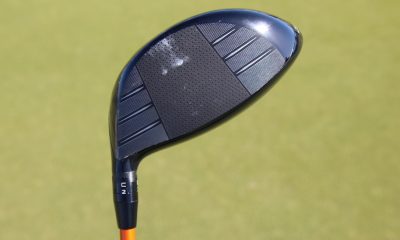







Mark
Jun 13, 2014 at 8:33 am
Good article Richie. For those who are dismissing it, take a closer look at your own game and evaluate your strengths and weaknesses. Then refer back to the article to see where you may gain the most from an improvement. I’m sure your intuition and knowledge of your own game can point you to your weaknesses even if you don’t keep detailed stats.
This year I’m working on being more aggressive into Par 5s (even when I can’t get all the way there), pitching and bunker play, and also improving my putting in the 3-15 foot range. I can already see improvements.
Kevin
Jun 9, 2014 at 11:44 am
You fail to put a score down for 15/5 Score in the bogey section as to what is good, average, bad.
joesixpack
Jun 9, 2014 at 11:29 am
Not a terrible article. I just don’t see it as very useful for many people. It’s too generic and focused on tour pros. I unfortunately do not have the game of a tour pro so in all likelihood these statistical trends you note based on tour pro data are not very relevant to me. You mentioned research you’ve done with amateurs as well, but again, my game looks nothing like the “average amateur”. I have my strengths and weaknesses that are particular to me. What the average pro or average amateur does is interesting to a degree, but there is so much variance from golfer to golfer that I just don’t find that useful at all.
The same is true for individual touring pros. You can tell Tim Clark that there’s a great correlation between “go for it” rate on par 5’s and par 5 scoring average, and it means nothing to him. He has to play to his strengths just like everybody else does.
What I do find useful is tracking my own stats and digging into my own statistical patterns. There are some great new products out there that work with smartphones and can track all of your shots and provide you with all of this data for your individual game. Use one and do your own statistical analysis and you won’t need to pay any attention to what the average tour pro or average amateur needs to do to score better on par 4s or par 3s. You can know what YOU need to do to score better.
John
Jun 9, 2014 at 8:59 am
Richie … don’t lose heart. I dug the article. Some people will never get it. I also noticed that the haters certainly didn’t add any alternative information.
Keep on keepin on.
Esben
Jun 9, 2014 at 6:53 am
First of all I think it is a great article, thanks for that Richie!
Too all of you guys that makes fun of this article, stating it is to obvious, haven’t really read it properly or either you just don’t get it.. As Richie mentioned in an above comment it is an article that goes into understanding how to get better on the par-3’s par-4’s and par-5’s holes which some of you clearly did not
understand!
I have read Richie’s articles for the past 2 months and for the last month I have been training on some the aspects of the game he mentioned in this article.
My focus have been on going for the par 5’s every time I can.
Improving my driving accuracy by swinging more controlled.
Improving my long iron play.
And lastly my putts from 1-6 feet.
That have made my handicap go from 3 to 1 in a month.
And yes I makes good sense to take statistic from your round to make things clearer, but every player should have an idea of where there game lacks!
If you don’t just train “the four cornerstones of the game” and you golf will improve!
Jm
Jun 8, 2014 at 8:50 pm
I think this is a good article with a misleading title.
And really it only helps anyone who keeps stats.
It really does a good job of providing/identifying the 5 basic scoring metrics you need to analyze in order to identify some of the most influential strengths and weaknesses in your game.
Once you find your strengths and weaknesses based on these 5 metrics then you can analyze why exactly you score well/poorly in certain areas
Carter
Jun 8, 2014 at 7:37 am
Solid article. The hacks above didn’t really think about the logic: look at what you are performing poorly at and then address how to improve there.
This certainly made me think about what to work on. I am scratch trying to get to plus and win club championship.
My par 4 scoring is mediocre for my hdcp and I can see it is due to less than fair driver accuracy and weak long iron play.
My bogie rate is not good. This is certainly bc I excel at short game yet long iron ball striking in general is a weak stat. .
My par 5 scoring, relatively speaking, is weak and I can see how trying to crush it off the tee instead of a stock driver in the fairway has greatly affected my score. When thinking about it, although I hit it plus 300 yards, I’m usually in the rough. Last 5 rounds I only hit 46% of fairways.
Birdie rate is average and improving par 5 stat will get me there.
My best stat above is par3 scoring, which makes sense because I’m abnormally great long putter and putter in general and my short game far exceeds the rest of my game.
So my priorities are:
Driver accuracy
175-225 shots
MFB
Jun 7, 2014 at 11:21 am
Putts inside three feet are good.
1 mulligan each 9.
Maximum score on a hole is Double Bogey.
Use a pencil with an eraser.
Stop after 15 holes.
melrosegod
Jun 7, 2014 at 9:41 am
What to work on to score better…
Drives
iron play
short game
putting
well now the game is just too easy!
Dave
Jun 7, 2014 at 9:40 am
So all I have to do is improve on the Par 3’s, 4’s and 5’s? Thanks for the tip.
Richie Hunt
Jun 7, 2014 at 11:15 pm
The article goes into *what goes into* improving on the par-3’s, par-4’s and par-5’s.
Colin
Jun 7, 2014 at 12:23 am
This article really put some groundbreaking information out there.
Scooter McGavin
Jun 6, 2014 at 7:10 pm
Soooo… Lower your scores by shooting more pars and birdies? If only somebody would have told me that sooner.
SN
Jun 6, 2014 at 8:32 pm
Totally agreed…
I didnt know that i should have worked on driving, irons, short game and putting.
This article is such an eye opener!!!
Square
Jun 6, 2014 at 8:58 pm
Scooter, that was funny….
Rich
Jun 6, 2014 at 7:01 pm
Statistics is so boring
Chris Steele
Jun 6, 2014 at 4:30 pm
I agree with Mike, All you’re really saying is hit better shots.
Jedidiah
Jun 6, 2014 at 4:04 pm
Still such a cutie richie
Duncan Castles
Jun 6, 2014 at 2:18 pm
Another excellent and informative article, Rich. Thanks.
Mike
Jun 6, 2014 at 1:16 pm
So not really shortcuts…this whole article is more like “he’s how to score in golf” and essentially means shoot better, score better lol
But thanks, was good, just a tad misleading.
Richie Hunt
Jun 6, 2014 at 2:29 pm
We had difficulty coming up with a good title. That certainly is not one of my strengths.